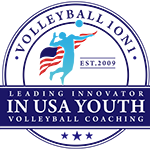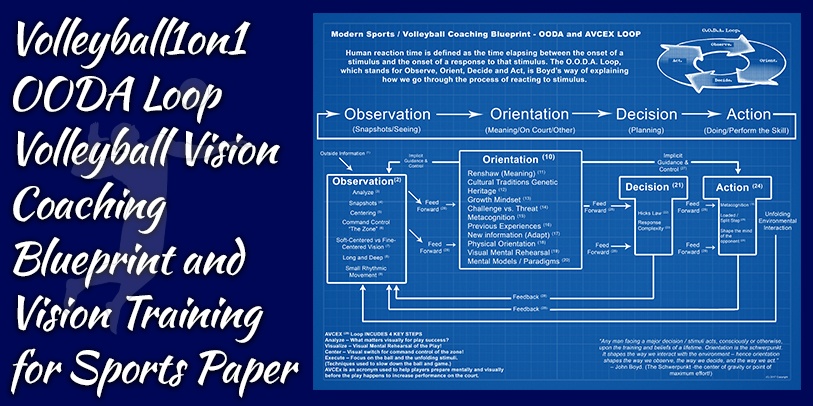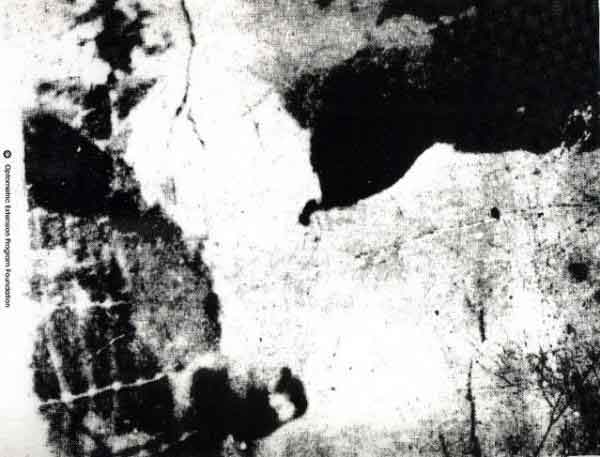Section 1 – Volleyball1on1 OODA Loop Vision Coaching Blueprint Introduction
In the last 7 years the biggest change in coaching the sport of volleyball has been “Reading the Game.” Most coaches teach it wrong in our opinion and miss where they can help their players best. We have spent the last seven years researching and testing the ideas presented in this section for indoor and beach across all skill levels and ages. These ideas can be applied for coaching players of all ages to improve their ability to “read the game,” “slow down the ball,” “slow down the game,” “deal with pressure,” and more.
We are sharing ideas and research with you now to add our contributions to the sport of volleyball for you as a High School Head Coach with coaching services we provide through our High School Volleyball1on1 Camps and Weekend Club Clinics.
Section 2 – Karch Kiraly’s Secret Weapon
In December 2011 the volleyball coaching world was rocked when Karch Kiraly revealed his secret to why he was arguably the best male player in United States volleyball history at the AVCA Convention in San Antonio, Texas. As Karch Kiraly is the only Olympic Gold Medalist for both beach and indoor, the volleyball coaching community took notice.
His ideas were a collaboration of the best coaching minds in volleyball, including: Hugh McCutcheon, Paula Weishoff, Ron Larson, Tom Black, and himself. Known as the “Big Five Coaches!”. Go here to see Karch Kiraly’s groundbreaking presentation:
After listening to Karch Kiraly’s ideas, we at Volleyball1on1 were both fascinated and excited. Was “Reading The Game!” the secret that would help us take our coaching system and tools to the next level?
Little did we know at the time that these ideas did not effectively describe or translate in a manner consumable by most volleyball athletes and coaches. We at Volleyball1on1 did not realize how these ideas would lead us down new hallways of research that would ultimately help us coach players to “read the game” better, “slow down the ball,” “slow down the game,” “eliminate pressure,” and ultimately define a new more effective language to describe better tools for coaching volleyball.
Volleyball1on1 teach volleyball players to: “Read The Game, Slow The Game, and Eliminate Pressure!” ™
Looking back in the days and months following Karch’s presentation, we at Volleyball1on1 tried to implement the ideas he shared. For weeks and what turned into months we followed and tested his directions with little or no success.
This was when we discovered the important vision principal optometry doctors understand and a simple example they use to clearly explain the difference between the terms “sight” and “vision”.
“Sight” is the ability to see and the eye’s response to light shining into it.
“Vision” is the ability to interpret and understand information that comes through the eyes.
The best example is the illustration below which clearly demonstrates what was missing in how “Reading The Game” was being taught by Karch Kiraly:
Section 3 – Renshaw Meaning (11) Example
This is a photograph above used by optometrist doctors that illustrates the point of the difference between sight and vision.
See the full video presentations on this topic of what this pic is here. This video will reveal what this is a picture of in case you don’t see it as well:
https://www.volleyball1on1.com/what-coaches-miss-when-teaching-reading-the-game-how-to-slow-the-ball-and-game-down-5-videos/
*Forward the first video to 9 min on the link above for the “big reveal” or continue reading.
For us to have vision of what we see we must get meaning. Most players do not always get meaning. However, someone with Karch Kiraly’s experience has “meaning” far greater which results in far better vision.
Don’t worry about the Renshaw picture above if you had trouble. In fact, 60% or more of people when they see this picture for the first time do not get meaning from what they see.
For Karch it was the “meaning” Karch receives that is so different than most other players. However, meaning is never emphasized enough in the way the “Big Five Coaches,” describe the process.
We realized at Volleyball1on1 that the “Big Five Coaches” were wrong as their language was not specific enough and language matters greatly in this capacity.
Alan Knipe USA Olympic Men’s coach for the 2012 team and current Long Beach State Head Coach is one of the top volleyball coaches in the world. He says:
“The terms, concepts, and techniques you teach your players should be a new language
that they should speak as if it’s their first language.” – Alan Knipe
Mega-motivational speaker and prior Volleyball1on1 Co-Founders mentor, Tony Robbins says about language.
“Words have incredible power in our lives. For one, they provide us with a vehicle for expressing and sharing our experiences with others. Most of us don’t realize that the words you habitually choose also affect what you experience. What’s interesting is how two people can experience the exact same sensations differently in their bodies by virtue of the labels they put on the experience. For example, one person may feel “frustrated” while the other just feels “a little confused.” It amounts to a huge difference in the way we feel, and when we change the way we feel, we change the way we behave.” – Tony Robbins
The language “The Big Five Coaches!” offer when it comes to “Reading The Game!” along with other coaches who learned it from them is ineffective in our opinion at Volleyball1on1 which results in not successfully teaching “Reading The Game!”
For example, this language taught by the “The Big Five Coaches!” includes: “looking at” or “reading”, “information rich areas”. Once you “READ” the opponent, you “PLAN” your “action”, and perform “DO” the volleyball skill.
Why “Read – Plan – Do” Is Ineffective
We at Volleyball1on1 came to realize there were important pieces of information and verbal cues missing in “Read-Plan-Do.”
“READ” was too broad and many young players confused “SIGHT” with “VISION”.
We saw a need to expand beyond “The Big Five Coaches!” volleyball coaching techniques on “Reading The Game!” In the process researching better language / system, we identified other tools and new areas that were more effective, better researched, and included science.
The result, we discovered new, powerful tool for High School Head Coaches, their staff, and players that could improve the teaching of “Reading The Game!”, while helping players learn how to “Slow The Ball,” “Slow The Game” and “Eliminate Pressure”.
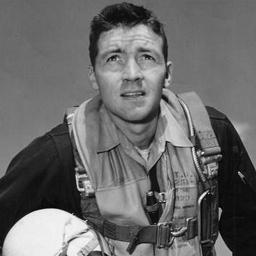 Section 4 – John Boyd And The OODA Loop
Section 4 – John Boyd And The OODA Loop
John Boyd, The “Fighter Pilot Who Changed The Art of War” With The OODA Loop.
As discussed, the fundamental problem of language in how “Reading The Game!” was taught in volleyball inspired us to seek a better explanation. Excitingly, we found our answers in one of the most researched industries in the world: aerial dog-fighter combat.
The pioneer and perhaps the lead innovator on this topic is John Boyd. Colonel Boyd, known as the “Fighter Pilot Who Changed The Art of War” was an F-86 pilot and commander of a fighter group during the latter part of the Korean War.
Known as 40 second Boyd, his skills in the air meant he could kill most enemy combatants in just 40 seconds. His ideas revolutionized the Airforce and Colonel Boyd trained his pilots based upon his observations of human reaction time.
As a result, his pilots enjoyed a 10 to 1 kill ratio over the superior Mig-15’s using his ideas by the end of the Korean War.
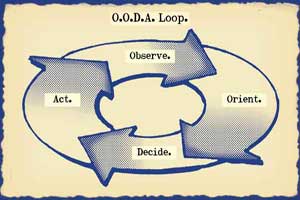 Colonel John Boyd Coined The Term O.O.D.A. Loop In The 1950’s.
Colonel John Boyd Coined The Term O.O.D.A. Loop In The 1950’s.
The O.O.D.A. Loop is a process we go through hundreds if not thousands of times in a single day. It is a process that defines how we humans react to stimulus. His observations led him to a greater understanding of human reaction time and the coining of the term O.O.D.A. Loop.
Human reaction time is defined as the time elapsing between the onset of a “stimulus” and the onset of a “response” to that stimulus. The O.O.D.A. Loop stands for Observe, Orient, Decide and Act. This is Boyd’s way of explaining how we go through the process of reacting to stimulus.
 “Reading The Game!” in volleyball is nothing more than “How We React To Stimuli” on the court playing volleyball.
“Reading The Game!” in volleyball is nothing more than “How We React To Stimuli” on the court playing volleyball.
First we “Observe.” We process approximately 80% of the information we receive with our sense of sight. (Training our vision through visual exercises is very important)
In the “Orient” stage you are now focusing your attention on what you have just observed. Essentially getting vision / meaning vs. sight.
“Orientation is the schwerpunkt. It shapes the way we interact with the environment – hence orientation shapes the way we observe, the way we decide, and the way we act.” – Colonel John Boyd.
The word “Schwerpunkt” means the center of gravity or point of maximum effort. John Boyd described it as the most important part of the OODA Loop and most coaches completely miss this when teaching “Reading The Game!” for volleyball.
“Any man facing a major decision / stimuli acts, consciously or otherwise,
upon the training and beliefs of a lifetime.” – Colonel John Boyd.
“Orientation” not only allows us to see with vision, it also shapes what we see as described by John Boyd. Think about how Karch Kiraly’s vision is shaped by his lifetime of training and beliefs. Through our research we came to understand “Orientation” is the missing and essential “verbal cue” in the “Big Five Coaches!” teachings on “Reading The Game!” as I discussed earlier with my Renshaw Cow example.
The next stage is the “Decision” step in which you must decide or plan your action based upon what you have just observed and focused your attention on.
Finally, you have made your decision and the last step is to “Act” upon that decision or perform the volleyball skill.
The O.O.D.A loop is what happens between the onset of a stimulus and the onset of a reaction to that stimulus. It is a “Loop” because as players and humans we are constantly reacting to “stimuli” and “new stimuli”. This includes as we navigate through the world each day or how we play volleyball. We are constantly in the loop “observing”, then “orientating” what we see into vision, then using and processing vision to make “decisions” and “act” in our daily life or perform volleyball skills.
 A Better System – The OODA Loop
A Better System – The OODA Loop
Why the OODA Loop is a better system? By having a more clearly defined language at Volleyball 1on1 for “Reading The Game!” coaches and players can more clearly define what players are doing incorrectly and fix it.
“The Language Of Volleyball You Speak In Your Program. Systems, Terms / Concepts, Techniques –
Teach Your Players A New Language, Speak It As Your First Language!” – Alan Knipe
The OODA Loop offers a vast amount of research and science that can be applied to many parts of the game with the result that it can dramatically improve players performance on the court.
This improvement on the court includes: “Reading The Game!”, “Slowing Down The Ball”, “Slowing Down The Game”, “Getting In The Zone”, and “Eliminating Pressure”. Advanced volleyball strategy includes: “Shaping The Mind Of Your Opponent” to slow their reaction time on the court. When these benefits above are combined together, the effects are dramatic which offers coaches new opportunities to dramatically improve their players performance on the court.
Section 5 – Volleyball1on1 OODA Loop Volleyball Vision Coaching Blueprint
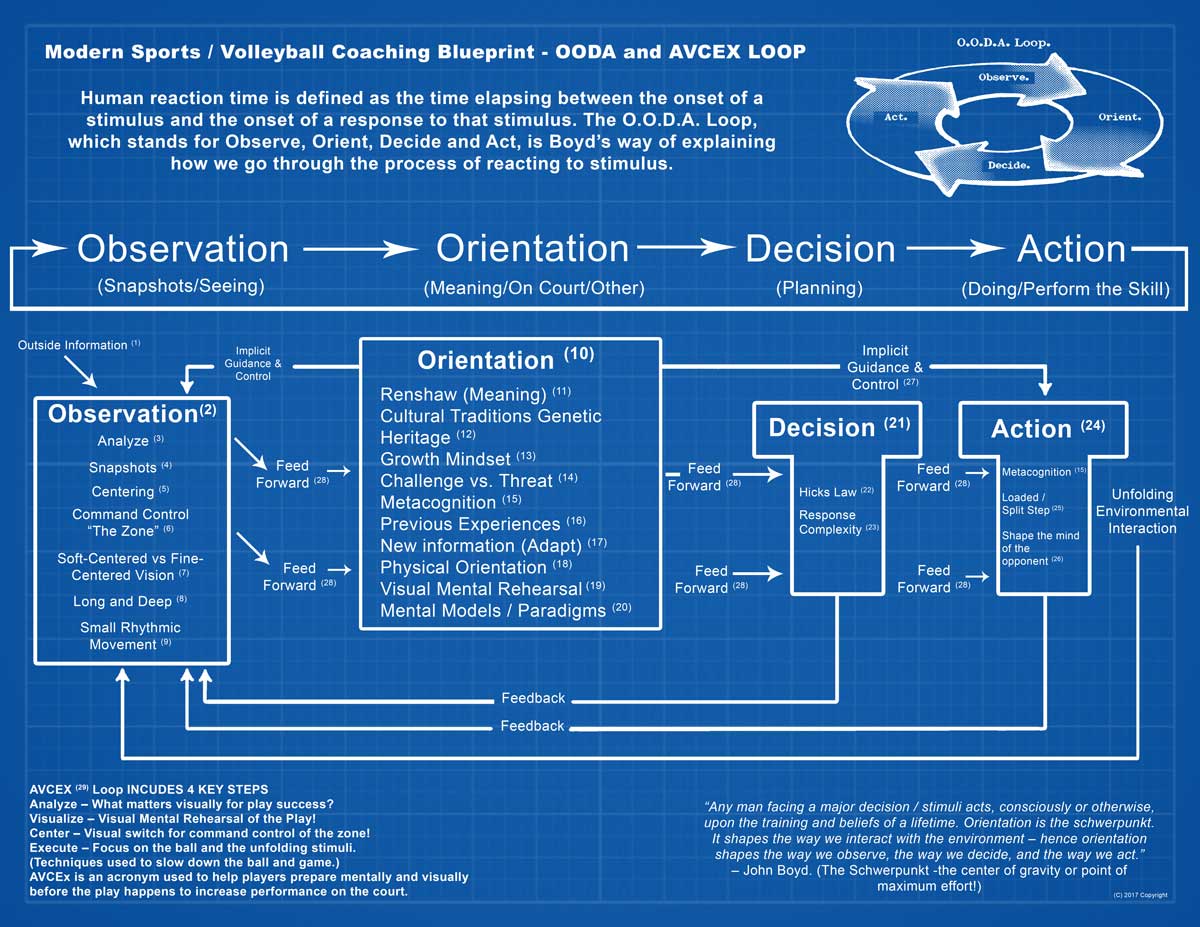
Volleyball1on1 OODA Loop Volleyball Vision Coaching Blueprint
If you are a High School Varsity Head Coach and you are interested in receiving a complete copy of our Volleyball1on1 25-page Volleyball OODA LOOP Vision Coaching Blueprint educational report, Level 1 – 5 Vision Training Exercises, and access to our Volleyball1on1 Vision Training Video links to help your players “Read The Game!”, “Slow The Ball & Game Down”, and “Deal With Pressure”, register for a Volleyball1on1 Summer Coaches & Players Camp to receive access to all the above!
